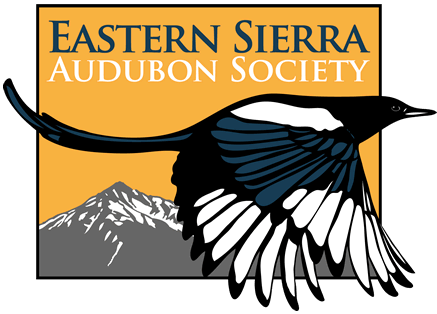Once upon a time, long, long ago, bison herds roamed the central plains accompanied by the small, drab buffalo-bird. This black and brown bird walked and hopped between the legs of the behemoth bovines capturing insects disturbed by the hooves churning up the rich soil and grasses. This remarkable bird evolved from nest-building ancestors in South America to a nest parasite that dumps its parental responsibilities into the nests of others throughout North America.
The theories for this transition are many but the fact is this creative creature was able to stay, year around, with the far-ranging herd that indirectly provided a smorgasbord of grain, weed seeds, berries and insects. The cost was the abrogation of parental responsibilities: nest-building, incubation, feeding young, and education of fledglings. The host species for the most part were sparrows whose nests were hidden in the very clumps of grasses and flowers on which the bison were stomping and grazing. Over eons of time the sparrows developed methods for coping, and the cowbirds’ numbers failed to swell beyond that which they could handle.
The female cowbird produces about 25 eggs per year, far more than most other passerines, and are incubated for about 11 days, far shorter than most other passerines. The female carefully times her laying so that the baby cowbird usually hatches a day or two earlier than do the host species young. Another genetic defense is that the new cowbird doubles its weight in the first 24 hours and then, incredibly, doubles it again in the second 24 hours. This rapid growth rate doesn’t continue but the combination of earlier hatching and rapid growth rate produces a baby bird with a huge mouth that is closest to the “parents'” food-filled beak. This puts the rest of the young at a serious and usually fatal disadvantage.
As pioneers settled the West, bringing their cattle and horses with them, the buffalo-bird found new providers whose range was far smaller than bison. The numbers of buffalo/cow-birds increased with the increase in livestock, and, as pioneers settled areas not inhabited by bison, the buffalo/cow-bird became distributed from coast to coast. When the railroads plunged across the plains, helping in the almost total extermination of the bison, the final transition took place. This ever-adaptive bird switched its allegiance to domestic cattle and horses and became the cowbird we know today.
While some birds are able to thwart cowbirds, the large majority have developed no coping skills and usually raise the cowbird young at the expense of their own. Over 216 species have been documented as cowbird hosts. Most of the victims are in four families: vireos, warblers, tyrant flycatchers & finches. The cowbird has reduced the population of eastern woodland birds by half; entire species have disappeared in some areas. The Kirtland’s Warbler, found in Michigan, was down to 201 singing males in June 1971. An intensive cowbird trapping program was begun and almost immediately the decline was reversed. The end of summer 1975 saw the total population up to 1200 birds and as the trapping has continued so has the recovery of the Kirtland’s Warbler.
Inyo County’s earliest cowbird record occurred in 1891 when the A. K. Fisher Expedition collected a male at Furnace Creek Ranch in what is now Death Valley National Monument. They have had a steady success story since then, but it’s been at the expense of millions of songbirds. Western Wood Pewee, Willow Flycatcher, Blue-gray Gnatcatcher, Warbling Vireo, Orange-crowned Warbler, Yellow Warbler, Yellow-rumped Warbler, Black-throated Gray Warbler, MacGillivray’s Warbler, Common Yellowthroat, and many others, have suffered declines in Inyo but none as pernicious as the Bell’s Vireo. Up through the seventies a few could still be heard “cheedle chee”ing in the riparian habitat along the Owens River, but their beautiful song is heard there no more.
The placement of pack stations in our mountains is devastating to forest dwelling birds. The corrals and nearby meadows provide sustenance for the cowbirds, while the forest provides all the nests the cowbirds can fill.
Stephen A. Laymon, Research Director of the Kern River Research Center, tells of work by John & Jane Griffith who have been working on a cowbird control project. Their data for the past 10 years showed that Bell’s Vireos increased from 20 to 250 pairs, populations of Willow Flycatcher, Wilson’s Warbler and Warbling Vireo have become re-established and Yellow Warblers have become much more common. These studies and others underway show the efficacy of cowbird control. Laymon also reported on a residence in Kern County that had 50 cowbirds seen together in one winter. When a cowbird trap was set, over 200 were caught! If half of these trapped birds were female, and they each laid 25 eggs, then, in one year, 2500 cowbirds could have been raised instead of vireos, warblers, thrushes, flycatchers, sparrows, grosbeaks, gnatcatchers, etc. In Big Pine 80 cowbirds were seen together last winter. How many could be trapped there?
This is not a fairy tale because not everybody lives happily ever after. Only the cowbird is happy in this story. Is this a case of being too successful? Whose nest will the cowbird use when all the songbirds are gone? Or will it meet the same end that it brought on others. This is not evolution gone berserk. It shows the negative impact man can have by unwittingly insuring the success of one species over others. If there is to be a happy ending to this saga it will happen only if the animal responsible for the spread of the Brown-headed Cowbird accepts responsibility for its control, not its eradication, just its control.
Tags: crow, finch, flycatcher, gnatcatcher, grosbeak, sparrow, thrush, vireo, warbler
